The flags of the countries of the world are all unique and beautiful in their own ways. An outsider might just look at the colors and designs in an artistic way. However, those who live under that flag know how it represents their country’s history, natural environment, and people. Flags evoke powerful emotions for the people of a country: sometimes uniting them, sometimes dividing them.
In this article, we’ve chosen a selection of flags that have beautiful colors and unique design elements. Consider it just an appetizer of all the gorgeous flags there are in the world. Check out the link at the end of this article to see all the world’s flags. In the meantime, see if you agree with our selections for the most beautiful and unique flag designs.
Bahamas
The Bahamas is a nation of gorgeous Caribbean islands located southeast of Florida. A former British colony, the country gained its independence in 1973. The flag of Bahamas includes a black triangle and two broad bands of teal with a golden band between them. It represents the Afro-Caribbean heritage of the population, the Caribbean Sea, and the Atlantic Ocean. It also symbolizes the sun, sand, and beaches that make this country such a popular tourist destination. The design is simple and meaningful, and the color scheme is unique among the flags of the world. That’s why it made our list.
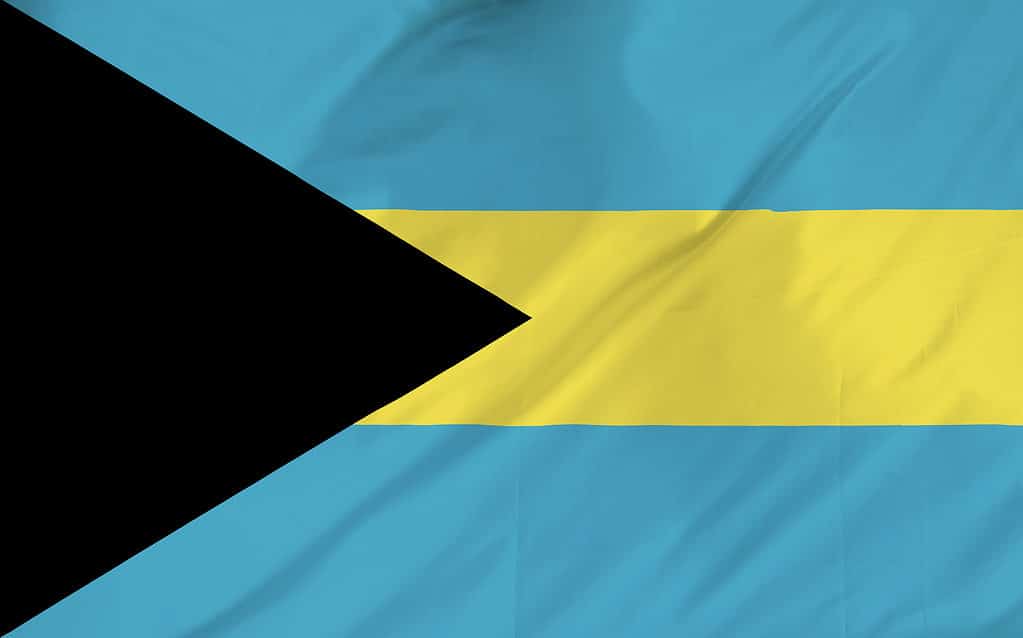
The flag of the Bahamas represents the country’s heritage as well as the Caribbean Sea, Atlantic Ocean, sun, sand, and beaches.
©Sparrowbh/Shutterstock.com
Bosnia and Herzegovina
The flag of Bosnia and Herzegovina includes a yellow triangle based on the top of the flag with its point facing down. This divides the flag into two royal blue fields. A border of white stars lies in a diagonal line along the triangle’s hypotenuse. Unusually, the stars at the top and bottom are cut in half by the edge of the flag. Blue and white point to the country’s involvement in the Council of Europe. The triangle suggests the country’s three nationalities: Croats, Serbs, and Bosnians. Several years after the country declared independence from Yugoslavia, it adopted this flag in 1998. Why did we pick it for our list? Because of its modern design, complementary colors, and minimalist aesthetic.

The current flag of Bosnia and Herzegovina was adopted in 1998 and features a bright blue field with a yellow triangle dividing it.
©iStock.com/Oleksii Liskonih
Brazil
Brazil has one of the most unique and immediately recognizable flags in the world. A professor, several astronomers, and a painter designed the flag. It features a celestial globe showing the night sky, with every star representing a Brazilian state. The globe sits on a yellow diamond representing the country’s mineral wealth, centered on a green field. The green span stands for the rainforest. A ribbon around the globe has the inscription “Ordem e Progresso,” which means “Order and Progress.” The colors of Brazil’s flag are striking and unique. Its design is simple and recognizable from a distance. However, it has details that bring even more meaning to those who look closely. We had to have it for our list!

The flag of Brazil features a celestial globe showing the night sky, with every star representing a Brazilian state.
©iStock.com/Hendra Su
Canada
Canada’s flag makes the list for its elegant red maple leaf design. It is centered on a white field balanced by red vertical bars on the hoist and fly ends. This simple design carries a great deal of meaning, however. Red and white come from the St. George’s cross flag. The British explorer John Cabot planted this particular flag in Canada in 1497.
The modern flag is not colonial, however. The inclusion of a maple leaf looks to the natural environment. Not only is maple syrup a quintessential modern Canadian product, but First Nations people used maple sap for centuries. The red maple leaf was also a popular Canadian symbol for athletes and soldiers in both World Wars. So, while Canada’s current flag has flown only since 1965, it reminds us of the long history of Canadian people.
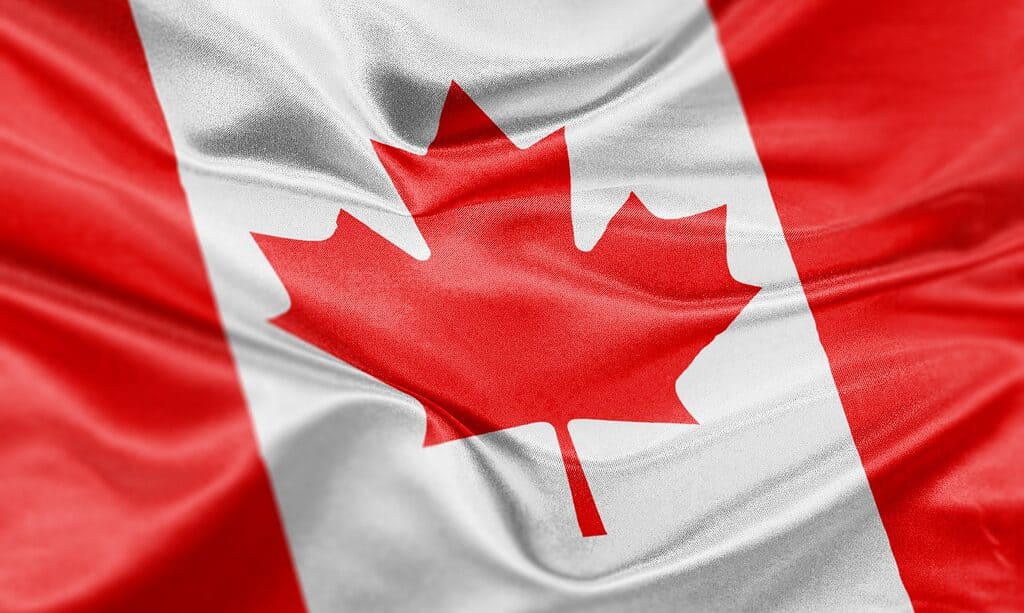
The flag of Canada features a large red maple leaf at its center, an iconic Canadian symbol.
©iStock.com/husayno
Cape Verde
Cape Verde is a nation of islands off the west coast of Africa. They were uninhabited when discovered by the Portuguese in the 15th century. They were settled and colonized by Portugal until they achieved independence in 1975. Their current flag is a royal blue field with a horizontal red line bordered by two white lines to the bottom of center. Superimposed on the hoist side of center is a circle of 10 yellow stars. Blue stands for the ocean and sky, and the stripes represent the country’s progress. The stars stand for the 10 islands in the archipelago, arranged in a circle to represent their unity. The whole effect looks a little like a present with a ribbon and bow that looks too nice to unwrap. It’s truly a stylish and eye-catching design.
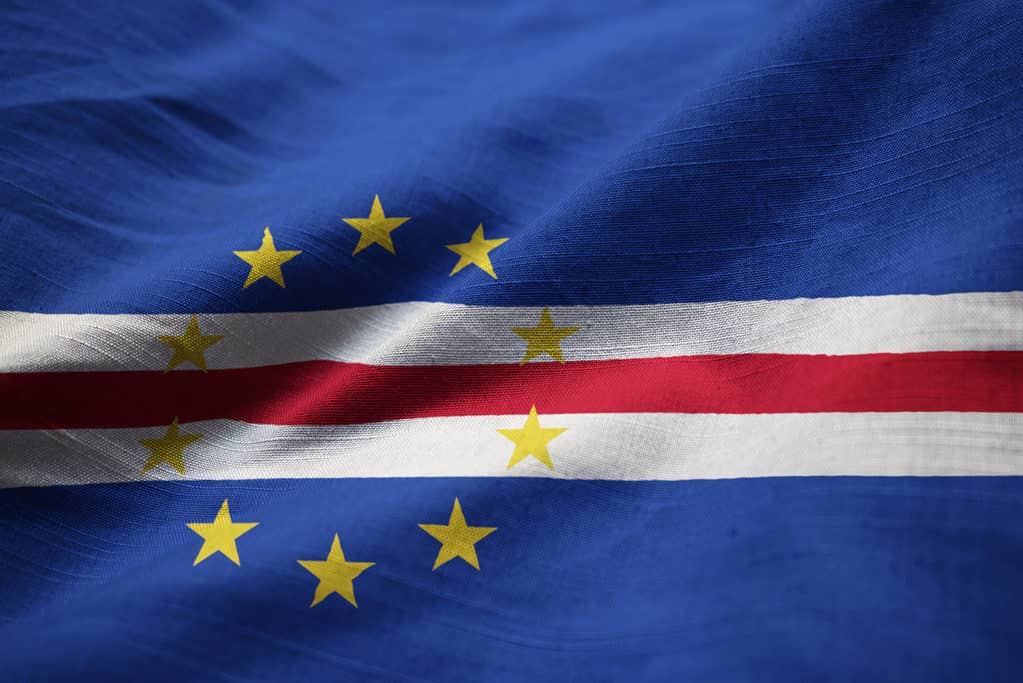
Cape Verde flag has a blue background representing the ocean and sky, with stripes signifying the country’s progress.
©iStock.com/shaadjutt
Central African Republic
The flag of the Central African Republic was adopted when this nation became independent from France in 1958. Officials designed the flag to honor the country’s history as an African nation, but with historical ties to France as well. With this in mind, the flag includes equal horizontal stripes of blue and white (from the French flag), and green and yellow (Pan-African colors found in many flags in the region). A central vertical red band unites them all. It commemorates the blood spilled in the country’s struggle for freedom.
Finally, a yellow five-pointed star placed at the top near the hoist represents unity, progress, and tolerance. The combination of colors in this flag is rather unique, in that it brings together colors popular in European and African flags in a pleasing way. But what really makes this flag stand out is how the red vertical band unifies from top to bottom. It’s colorful and eye-catching, as well as poignantly meaningful.
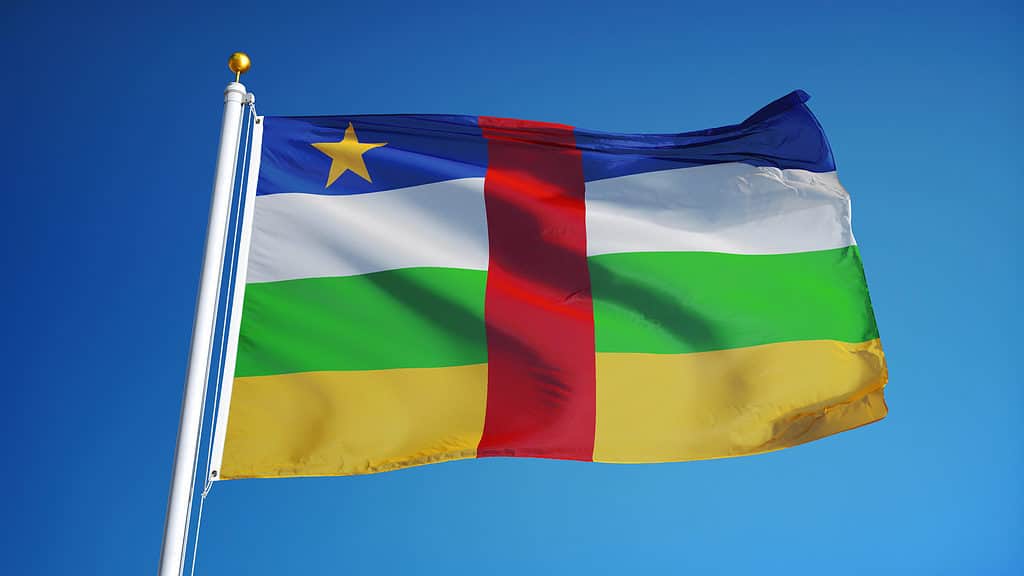
The bright red vertical band in the flag of the Central African Republic symbolizes the blood that was spilled in the country’s struggle for freedom.
©railway fx/Shutterstock.com
Estonia
The flag of Estonia stands out for its beautiful color scheme of cornflower blue, black, and white arranged in a simple tricolor of equal horizontal bands. This basic design is full of symbolic and emotional content, however. Blue stands for the sea, sky, and lakes of this Baltic Sea nation. Black recalls the traditional vests worn by Estonian farmers, but also the tragedies that have befallen the people. White reminds us of the country’s snowy winters and its desire for freedom. This flag was used by a popular student movement in 1881 but banned in the country’s occupation by the Soviet Union starting in 1940. Estonia regained its freedom in 1990 with the collapse of communism and adopted its historic flag again. They love it for the land, people, and freedom it represents. And we think it’s pretty.
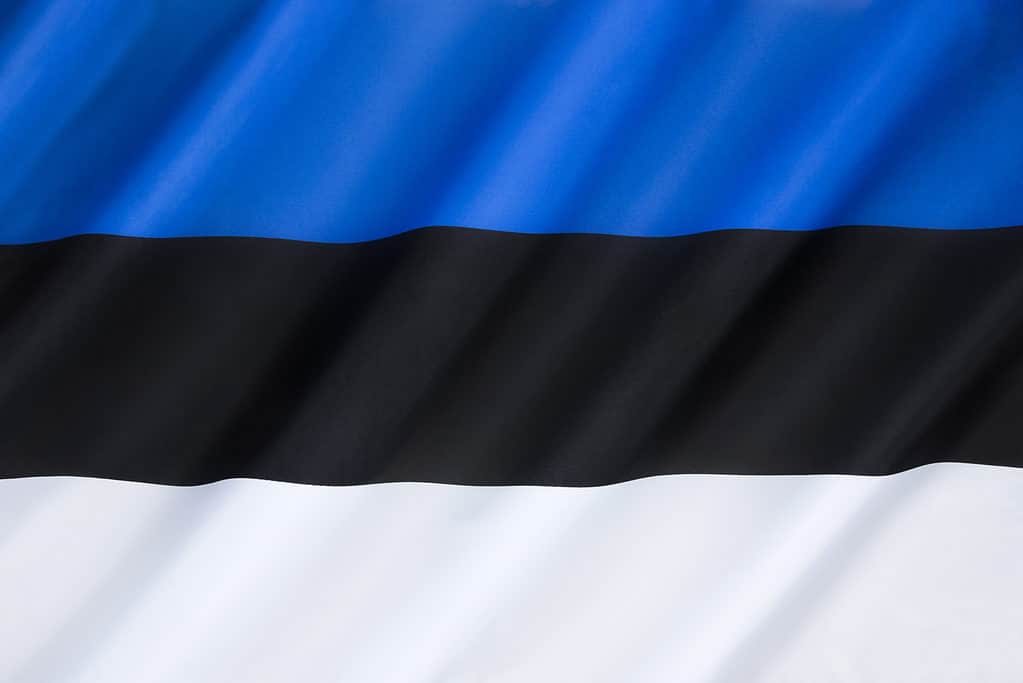
Estonia’s flag features a beautiful color scheme of cornflower blue, black, and white arranged in a simple tricolor of equal horizontal bands.
©Steve Allen/Shutterstock.com
Iceland
The design of Iceland’s flag is similar to that of other Scandinavian nations, with a horizontal cross situated on the hoist side of center. Its color scheme is unique, however, and reminiscent of the spectacular natural environment of the country. It includes a blue background with a red cross superimposed on a traditional white Scandinavian cross. The colors are symbolic of the blue Atlantic Ocean, the red lava of Iceland’s ubiquitous volcanoes, and the white of its glaciers and geysers. It’s a pleasing combination of colors, a memorable design, and a symbolic meaning that everyone can appreciate.
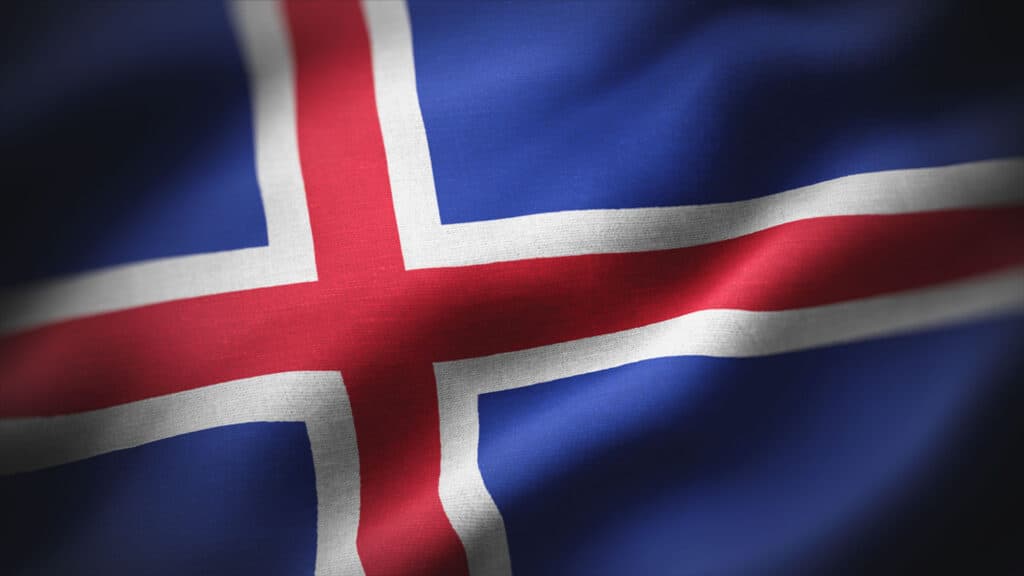
The colors in Iceland’s flag represent the blue Atlantic Ocean, the red lava of Iceland’s ubiquitous volcanoes, and the white of its glaciers.
©Tatohra/Shutterstock.com
Jamaica
Jamaica adopted its flag in 1962, upon independence from Britain. Its Saint Andrew’s Cross design is similar to that of the British Union Jack and looks to Jamaica’s colonial history. The colors, however, are Pan-African colors: yellow for the cross and green and black for the four triangular fields it creates. These symbolize the sun, the green land, and the difficulties of the people. Through its use of a pleasing African color combination with a popular European flag design, Jamaica created a flag that recalls its own complicated history and its future as a place that brings together people from around the world.
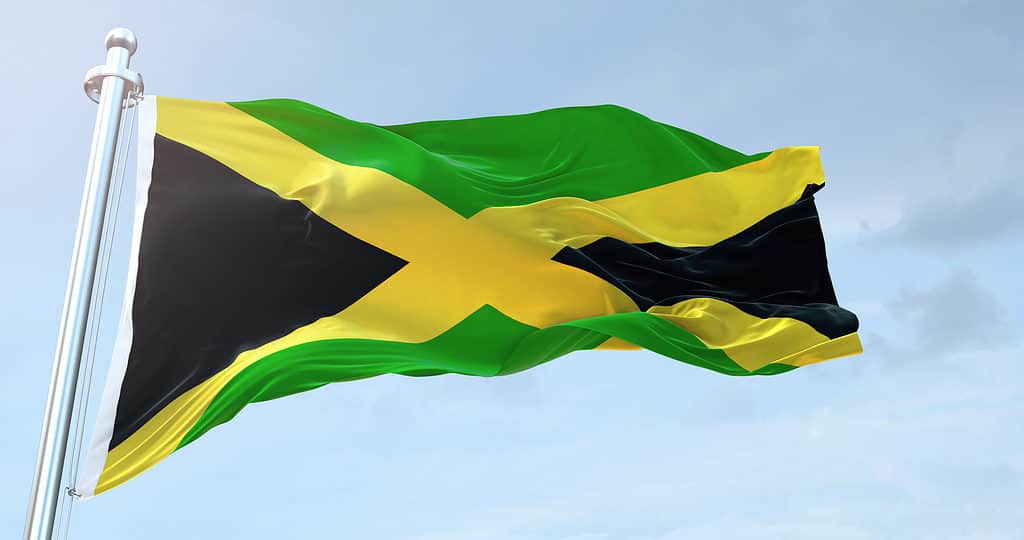
Flag of Jamaica waving in the wind.
©iStock.com/EA
Lebanon
Lebanon’s flag is immediately recognizable for its dominant image of a green cedar tree, a traditional emblem of the country. The cedars of Lebanon are mentioned 77 times in the Bible and were used in the building of the Jewish temple in Jerusalem. The cedar is centered on a white horizontal field situated between two red bars. Red, white, and green in the flag are Pan-Arab colors, expressing friendship and unity with the Arab world. Lebanon has large Christian and Muslim communities so its flag contains symbolism that can transcend differences and help forge unity in this historic and diverse country. But even if you don’t know the history and meaning behind it, you have to admit, it’s a darn good-looking flag.
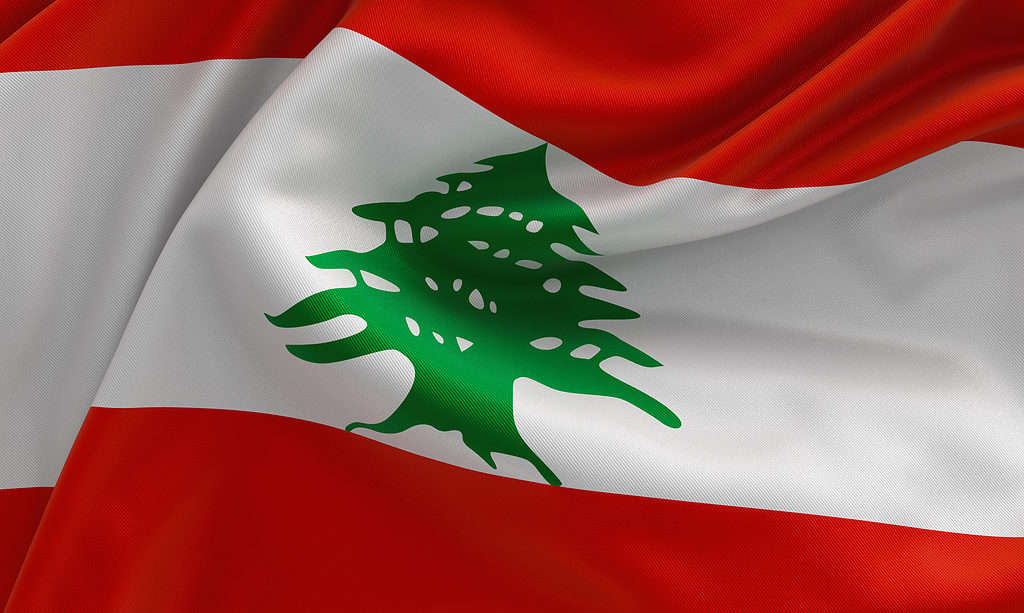
The flag of Lebanon features a green cedar tree at its center, a traditional emblem of the country.
©iStock.com/Nabil Kamara
Montenegro
Montenegro’s flag kind of makes us gush a little. It’s gorgeous. It looks like something that should fly from the pinnacle of a fairytale castle. At the center is the national emblem: a two-headed eagle holding a golden scepter and a blue orb topped with a golden cross. It holds a shield depicting a golden lion on a blue and green background – so kind of a flag-within-a-flag. Above the eagle is a gold and red crown. The whole emblem lies in a deep red field outlined in gold – one of the very few world flags with this kind of frame in the design.
In brief, the symbolism of the eagle is the close relationship between the church and state in Montenegro, with several crosses in the design and the symbol of the lion of Judah alluding to the country’s Christian faith. The red field represents blood – that of Christ and of the martyrs who died defending Montenegro. Finally, the golden border recalls the country’s royal past. The whole design is detailed, dignified, and regal. And now we want to buy one for our house.
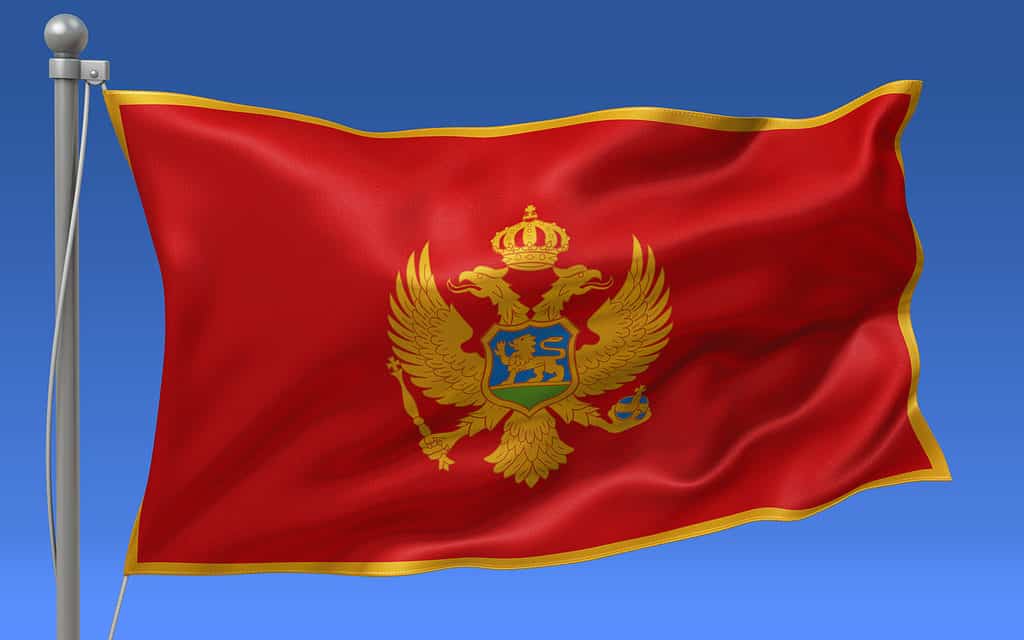
The Montenegro flag has a bright red field bordered in gold with the country’s coat of arms at its center.
©iStock.com/Nabil Kamara
New Zealand
New Zealand’s flag is quite similar to that of Australia, and people often mix the two up. Both include the British Union Jack flag in the upper left (hoist side) corner. Both have a blue field covering 3/4 of the flag. And both have stars. Here’s where they diverge, though. Australia’s flag uses six seven-pointed stars, is completely white, and includes a large bright star. It also has a depiction of the Southern Cross constellation to the right (fly side).
New Zealand’s flag uses only four 5-pointed stars in red, outlined in white. Both flags represent past colonial ties to Britain, the blue Pacific Ocean, and a prominent constellation in the night sky of the Southern Hemisphere. For many years there have been discussions and referenda in New Zealand about replacing the flag. A replacement could differentiate it from Australia’s flag and remove the British emblem. But a majority of New Zealanders prefer the current flag. And why not? It certainly caught our eye as an uncluttered design that looks to the country’s past!
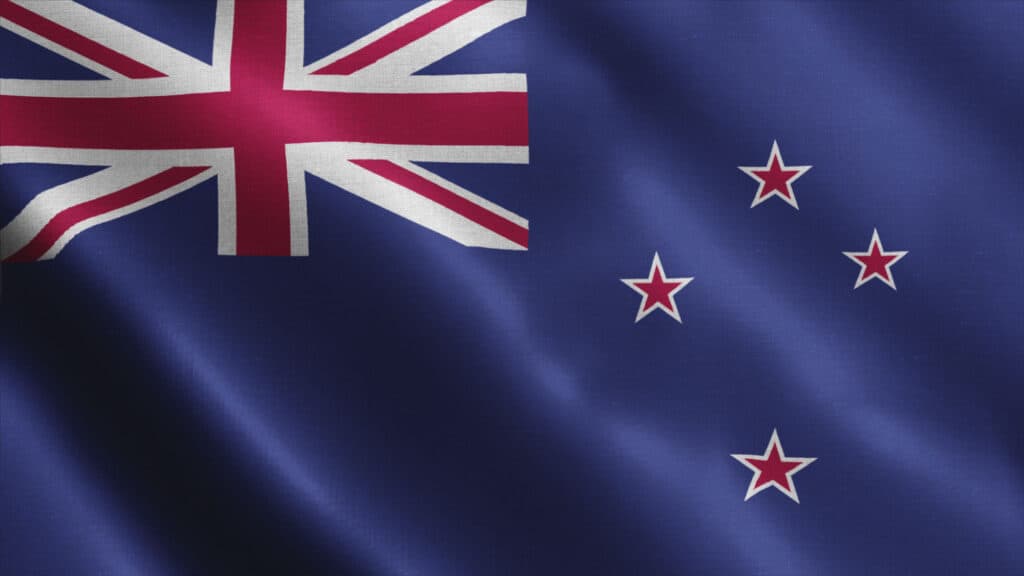
New Zealand’s flag has a blue field with the Union Jack in the upper left corner and four 5-pointed stars in red, outlined in white.
©Tatohra/Shutterstock.com
Seychelles
The Seychelles flag is unlike any other in the world. And that’s fitting because Seychelles itself is a unique country. It is made up of 115 islands in the Western Indian Ocean to the northeast of Madagascar. Its flag includes Pan-African colors of yellow, red, and green. It also features blue and white similar to the British flag, which flew from 1609 until its independence in 1976.
These colors represent every political party in the islands. They also stand for the sea and sky (blue); the sun (yellow); the hard-working, determined people (red); harmony and social justice (white); and the environment (green). What is most striking, though, is the arrangement of the bands of colors. They look like rays bursting from the lower hoist-side corner of the flag. This represents the country’s fresh, optimistic attitude toward the future. This colorful flag is arranged imaginatively in a way that suggests dynamic movement. It’s really a beautiful and unique effect.
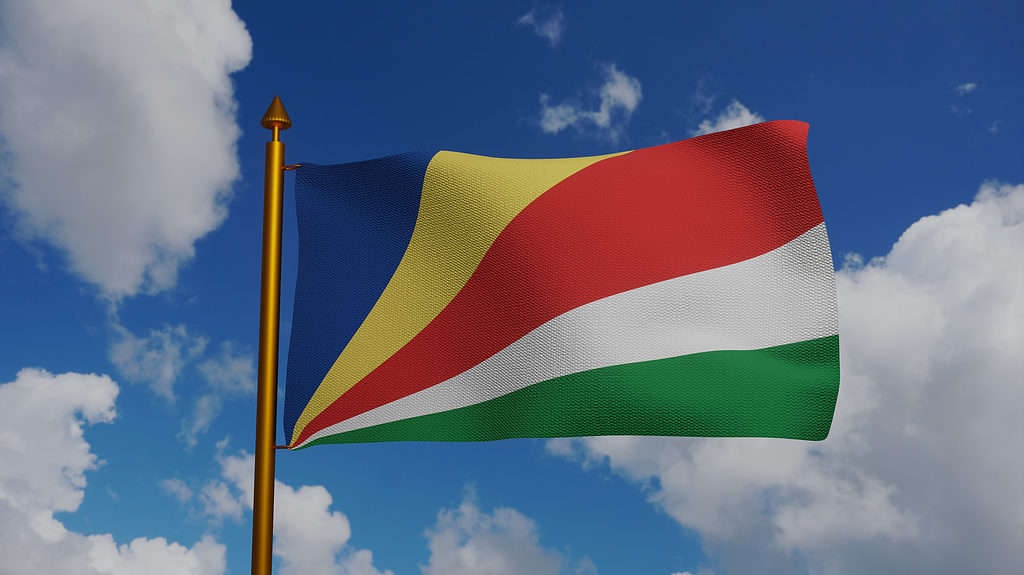
The bright colors of the flag of Seychelles symbolize the sea, sky, and sun as well as the people, harmony, social justice, and the environment.
©iStock.com/Oleg Prolat
Turkmenistan
Turkmenistan has one of the most complex flag designs in the world. Good luck to your kids if they try to draw this one in school! The basic design of the flag are traditional Islamic elements: a green field with stars and a crescent moon. There are five stars to represent the five regions of the country. It also stands for the Five Pillars of Islam, the core teachings of the faith.
But the complexity comes in a band near the hoist side of the flag. This strip represents various traditional designs used in the carpet industry, which has been a proud part of the country’s economy and culture since ancient times. The color schemes of these are mainly red, gold, white, and green. The intricate designs can best be appreciated on close examination. It’s safe to say, no country has a flag design like Turkmenistan’s beautiful tribute to its skilled craftspeople.

The band in the flag of Turkmenistan represents traditional designs used in the carpet industry, a proud part of the country’s economy and culture.
©railway fx/Shutterstock.com
United States
The flag of the United States uses the colors red, white, and blue. These colors came to be associated with republican forms of government. These revolutionary governments began to overthrow traditional monarchies in the late 18th century. The French flag is another example of this popular color scheme being used. The flag includes 13 alternating red and white stripes with a blue field in the upper hoist-side quadrant.
Originally there were 13 five-pointed stars arranged in a circle in the field. These, along with the stripes, represented the first 13 colonies. Over time, the number of stripes stayed the same, but the stars increased to 50 as new states were added. They were then arranged in rows to accommodate them all. In addition to the color scheme, the intricacy and simplicity of the American flag design make it attractive. You have to wonder, though, whether the original designers ever anticipated so many stars would be added. And if other states join in the future, such as Puerto Rico or Washington D.C., where would the extra stars go?

The flag of the United States of America uses the colors red, white, and blue and features stars for each of the country’s 50 states.
©Leonard Zhukovsky/Shutterstock.com
What do you think of our selection of the most beautiful and unique flag designs? Which flags would you add? Have a look at Every Flag in the World: Photos, History, and More to make your own choices.
The photo featured at the top of this post is © iStock.com/ChristianThielNet
Thank you for reading! Have some feedback for us? Contact the AZ Animals editorial team.







